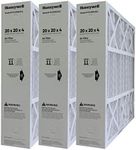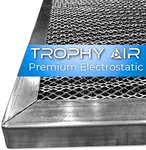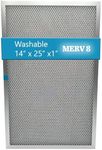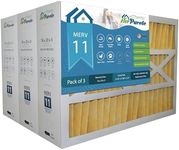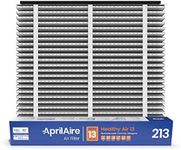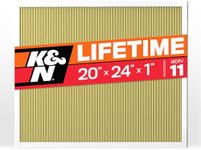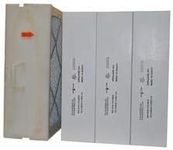Buying Guide for the Best Reusable Furnace Filters
Choosing the right reusable furnace filter is important for maintaining good air quality in your home and ensuring your heating and cooling system runs efficiently. Reusable filters are a great eco-friendly option because they can be washed and reused multiple times, saving you money and reducing waste. When shopping for a reusable furnace filter, it's important to understand the key features that affect performance, maintenance, and compatibility with your HVAC system. By focusing on the right specifications, you can find a filter that fits your needs and keeps your home's air clean.Filter SizeFilter size refers to the length, width, and thickness of the filter, and it must match the slot in your furnace or air handler. This is crucial because a filter that is too small or too large won't fit properly, allowing unfiltered air to bypass the filter and reducing its effectiveness. Sizes are usually listed in inches, such as 16x20x1. To find the right size, check your current filter or the specifications in your furnace manual. Always measure carefully and choose a filter that matches exactly, as even a small difference can impact performance.
MERV RatingThe MERV rating (Minimum Efficiency Reporting Value) measures how well a filter captures particles of different sizes. A higher MERV rating means the filter can trap smaller particles, improving air quality. MERV ratings for reusable filters typically range from 1 to 13. Lower ratings (1-4) capture only large particles like dust and lint, while mid-range (5-8) can trap mold spores and pet dander, and higher ratings (9-13) are effective against fine particles like smoke and bacteria. Choose a MERV rating based on your needs: if you have allergies or pets, a higher rating is better, but make sure your HVAC system can handle it, as higher ratings can restrict airflow.
Material TypeReusable furnace filters are made from materials like washable synthetic fibers or metal mesh. The material affects how well the filter traps particles and how easy it is to clean. Synthetic fibers are lightweight and can capture a range of particle sizes, while metal mesh is durable and easy to rinse. Consider your cleaning preferences and the level of filtration you need. If you want a filter that's easy to maintain, metal mesh might be best, but for better filtration, look for multi-layer synthetic options.
Ease of CleaningSince reusable filters need to be washed regularly, ease of cleaning is an important factor. Some filters can be rinsed with water, while others may require vacuuming or gentle scrubbing. Filters that are easy to disassemble and reassemble make the cleaning process simpler. If you prefer low-maintenance options, look for filters that can be quickly rinsed and dried. Think about how often you're willing to clean the filter and choose one that matches your routine.
Durability and LifespanDurability refers to how well the filter holds up after repeated cleanings and use. A good reusable filter should last several years if maintained properly. Check for sturdy frames and materials that won't degrade or warp over time. If you want a filter that will last longer, look for those with reinforced edges or metal frames. Your choice should depend on how often you plan to clean the filter and the conditions in your home, such as humidity or exposure to pet hair.
Airflow ResistanceAirflow resistance, sometimes called pressure drop, measures how much the filter restricts the flow of air through your HVAC system. Filters with high resistance can make your system work harder, reducing efficiency and possibly causing damage over time. Lower resistance means better airflow but may capture fewer particles. If you have an older or less powerful HVAC system, choose a filter with low to moderate resistance to avoid straining the system. Always check your system's recommendations for maximum allowable resistance.



